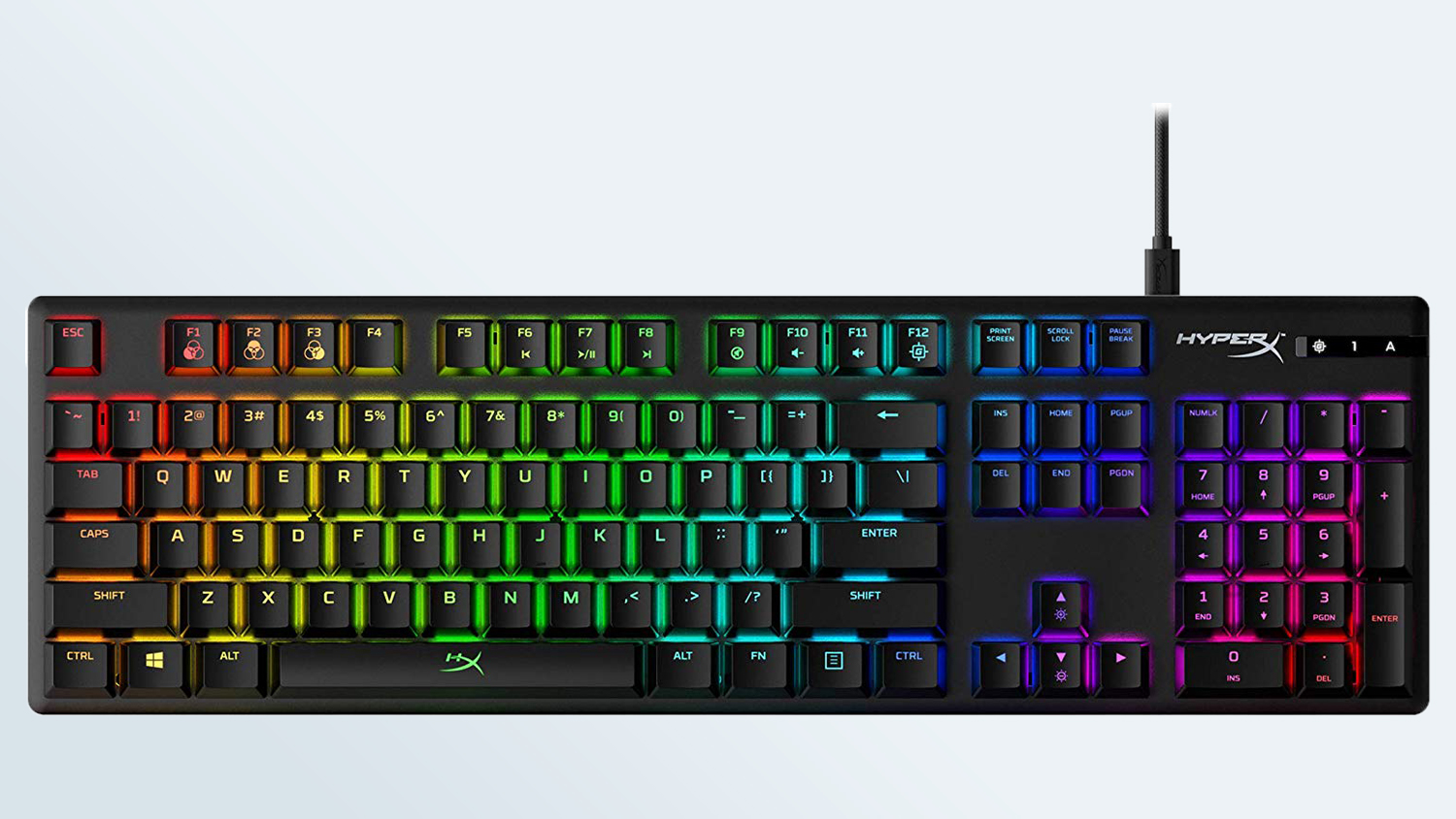Tom's Guide Verdict
The HyperX Alloy Origins isn't the most feature-rich gaming keyboard available, but for the price, it packs in an impressive amount of stuff.
Pros
- +
Cheaper than competitors
- +
Pretty RGB lighting
- +
Decent HyperX switches
Cons
- -
Clunky software
- -
No media bar
- -
Limited customization
Why you can trust Tom's Guide
When HyperX first came on the gaming peripheral scene, its mission statement was very simple: high-quality gaming headsets, stripped of all pretense — and a large chunk of the price. Since then, HyperX has expanded its operations to mice and keyboards, with good results across the board. But over time, the products' cost has crept back up, with premium pricing to match the premium features.
In that respect, the HyperX Alloy Origins keyboard ($110) is something of a return to form. This full-size, full-featured mechanical keyboard comes with comfortable switches, a sturdy chassis and full RGB features, all for about $50 less than some comparable models.
The Alloy Origins isn't necessarily the best gaming keyboard on the market. It's missing a few features that come standard with most models, such as discrete media keys and a wrist rest. Furthermore, the software is a little tetchy, and the switches can't help but feel like a small step down from the Cherry MX switches that HyperX used to use.
Still, to get this many features in a keyboard that costs just over $100 is enticing. The Alloy Origins isn't the most feature-rich gaming keyboard you can buy, but for the price, it packs in an impressive amount of stuff.
Design
Whether you want the Alloy Origins for a gaming nook, family desktop or an office desk, it will look great. Thanks to an understated, compact design with a black aluminum chassis, the Alloy Origins is one of the sleeker, more elegant keyboards available. It takes up just as much room as it needs to (17.4 x 5.2 x 1.4 inches), and blends in nicely with any setup — particularly since you can customize the keys with a variety of pleasing RGB patterns.
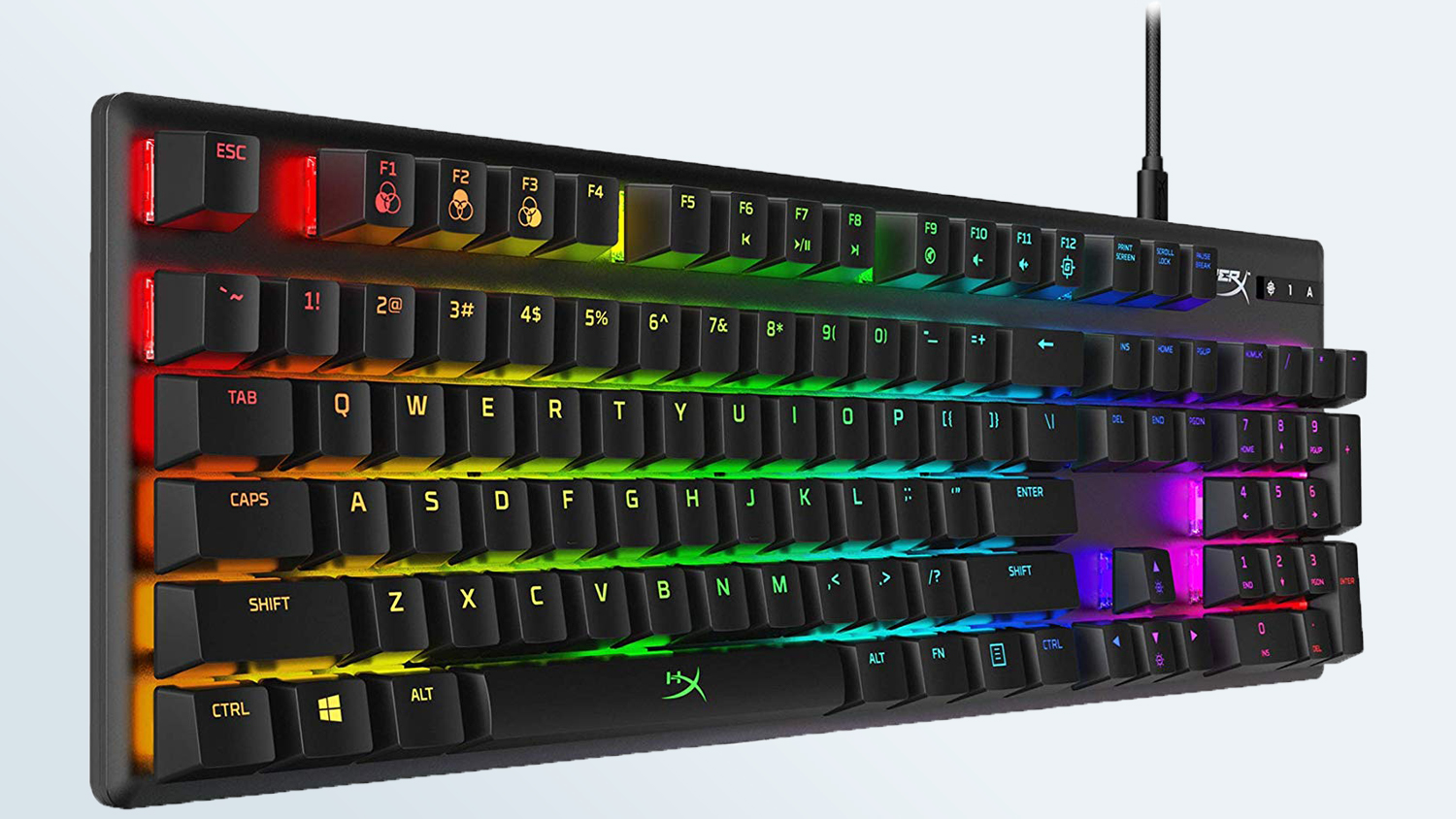
For the most part, the Alloy Origins looks like an ordinary full-size keyboard, but there are two features that stand out. The first is its first three function keys, which switch among onboard profiles. It's not uncommon for a keyboard to offer onboard profiles (whether you really need them depends on how many computers you want to use the keyboard with), but being able to activate them with a dedicated button press is a great feature.

The second perk is that the Alloy Origins houses a small LED screen in its upper-right corner. It's a convenient way to keep tabs on Caps Lock, Num Lock and the keyboard's Game Mode, which disables certain keys during gameplay. It's both attractive and functional, and I wonder why more keyboards haven't made use of something like this.
Get instant access to breaking news, the hottest reviews, great deals and helpful tips.
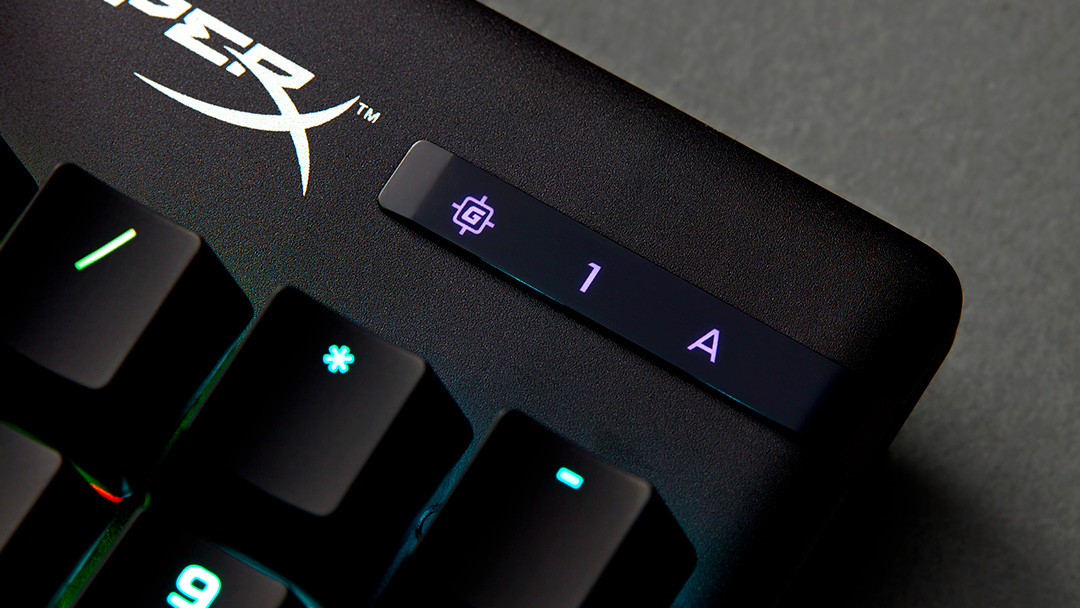
On the other hand, there are no discrete media keys, and that can limit the Alloy Origins' utility in everyday productivity. There are no extra macro keys, either, so hard-core MMO players, be warned.
Keys
Perhaps one reason why the Alloy Origins costs so much less than its competitors is that it doesn't use authentic Cherry MX mechanical switches. Instead, it's devised three in-house models: HyperX Red, HyperX Aqua and HyperX Blue. (At the time of writing, the Alloy Origins is available only with the Red switches, but the other two colors should come later.) Reds are quiet and linear, Aquas are quiet and tactile, and Blues are clicky and tactile.
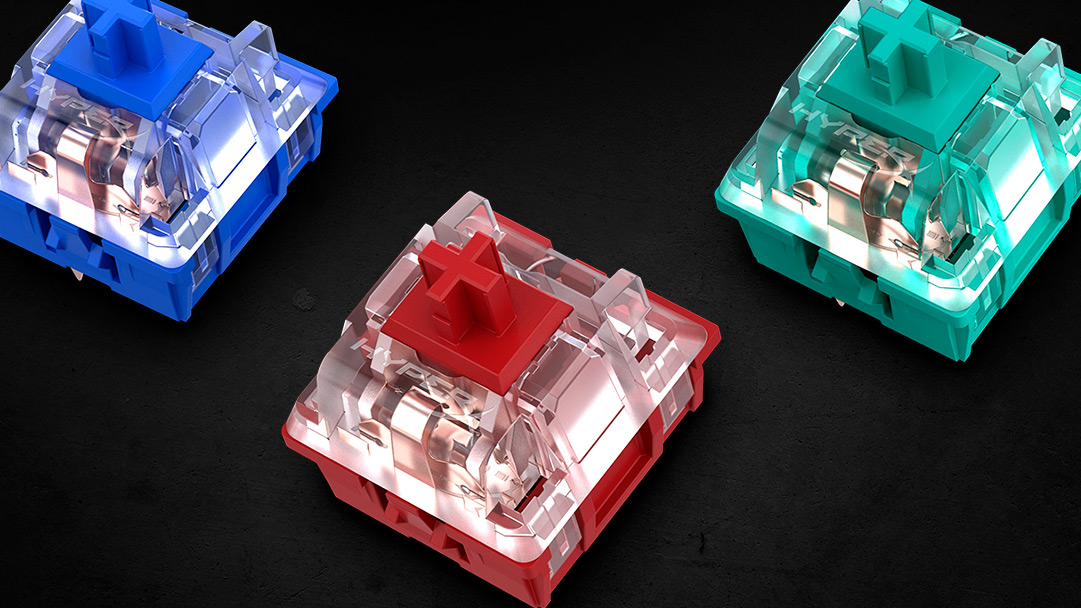
The Reds, at least, felt comparable to their Cherry MX counterparts. They were quiet enough to use in a crowded office, and had enough resistance for a satisfying keypress. They technically offer a little less key travel and actuation force than Cherry Reds, which does make them feel just a little stiffer in comparison. But the price is right, and this way, HyperX doesn't have to subject buyers to Cherry's long wait times between batches.
MORE: Best Gaming Gifts 2019
I took a test on Typing.com to gauge how well the new HyperX switches worked. With the Alloy Origins, I scored 132 words per minute with 99 percent accuracy. Compare and contrast to my everyday Logitech G810, which got me 129 words per minute with 98 percent accuracy. It's not a big difference, but it speaks well of the Alloy Origins, since I have so much less experience using that keyboard.
Features
The Alloy Origins runs on the HyperX NGenuity software, which is still in beta. (It's also downloadable only through the Windows Store, which is a bit of a pain, but I digress.) The software still has a long way to go, though, particularly when it comes to creating game-specific profiles.
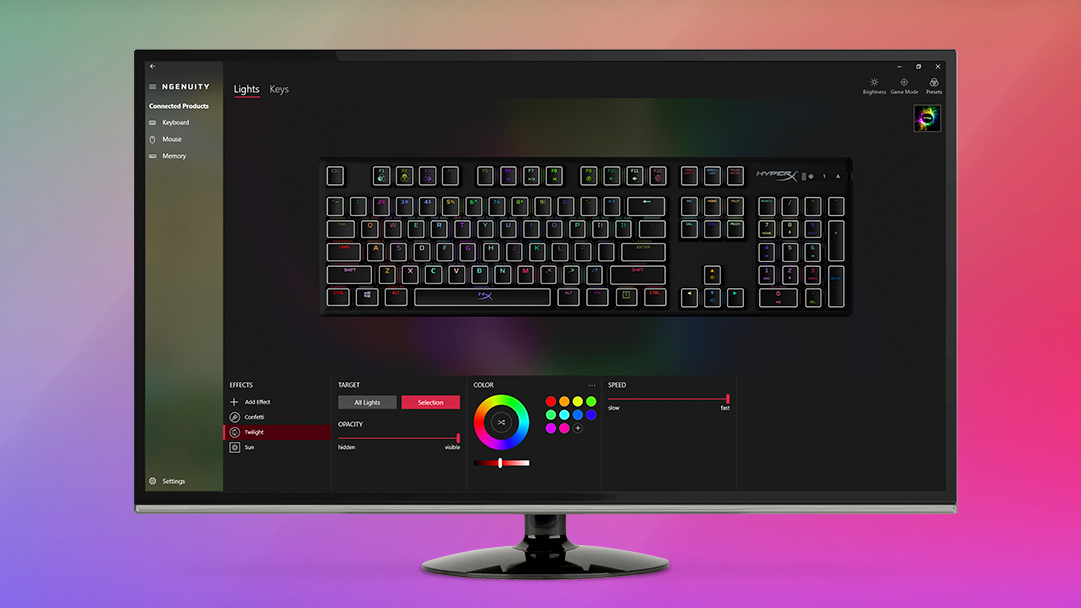
There are only a few things you can do with the NGenuity software: tweaking the RGB lighting and assigning those lighting profiles to individual games and apps. You can't program macros, and you can't reprogram any keys, making NGenuity fairly bare-bones, as these things go.
To make matters even more frustrating, setting up lighting profiles can be a pain. If all you want is a solid color, or a preprogrammed pattern, it's not too hard. But if you want to program different "zones" with special effects or colors, the process becomes very complicated. Rather than simply selecting keys, you need to layer effect on top of effect and select a different set of keys for each one. It's much more complicated, and much less efficient, than what you'd find in similar programs like Logitech G Hub or Razer Synapse.
Profiles also don't work quite as seamlessly as they should. Even if you get a program to recognize a profile upon launch (for which you need to go deep into your Program Files directory; simply choosing a shortcut won't work), the keyboard won't revert to a default profile when you return to the desktop. The whole thing is just more arcane than it needs to be, and less polished than it should be.
MORE: Best Gaming Desktops 2019
The Alloy Origins does earn a few brownie points for employing a detachable USB-C cable, however. It's rare to find detachable cords in full-size keyboards; rarer still for them to employ USB-C tech. I'm not sure this has a practical effect, but it's good of HyperX to look to the future.
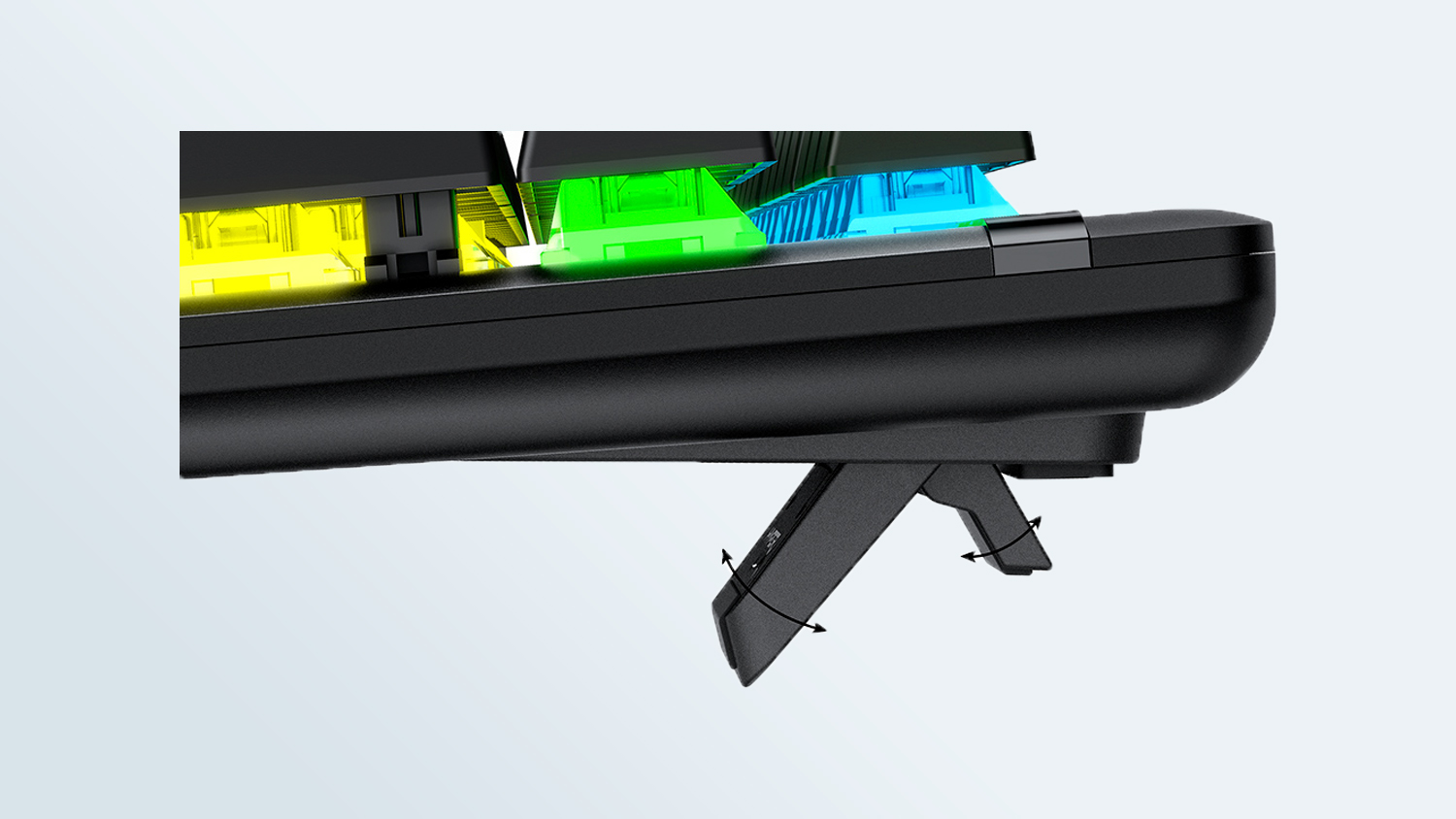
You can also swap out the keycaps for other HyperX-branded gear, such as the attractive White Pudding model. It's purely an aesthetic thing, but if you've got $25 to spend and a hankering for a different color, it's nice to have the option.
Performance
I ran the Alloy Origins through Overwatch, StarCraft: Remastered, Thronebreaker: The Witcher Tales and Final Fantasy XIV to test how well it handled different genres. The keyboard handled all titles deftly, providing responsive, precise keystrokes for everything from fast-paced first-person shooter action to demanding skill rotations in a massively multiplayer online game.
I should reiterate that the keyboard's software does not support macros, so bear that in mind if you need them for particularly high-level MMO play.
Bottom line
While losing Cherry MX keys stings a bit, HyperX's in-house replacements are worthwhile. And the lowered price is a thing of beauty, since it's just about impossible to find another brand-new RGB mechanical keyboard for $110. The software needs some work, and discrete media keys would have been a boon. But overall, it's hard to fault what the Alloy Origins offers, especially for the price. Pick it up if your gaming space needs a little RGB enhancement.

Marshall Honorof was a senior editor for Tom's Guide, overseeing the site's coverage of gaming hardware and software. He comes from a science writing background, having studied paleomammalogy, biological anthropology, and the history of science and technology. After hours, you can find him practicing taekwondo or doing deep dives on classic sci-fi.
